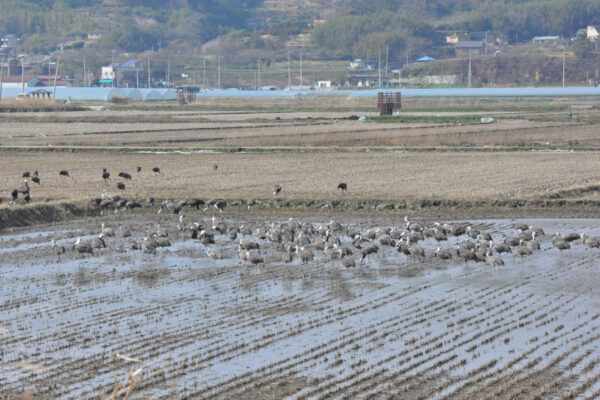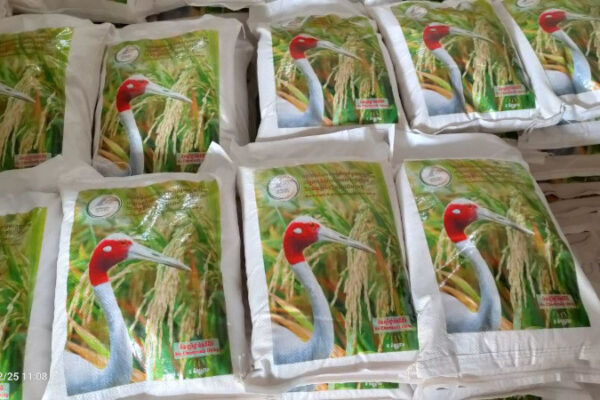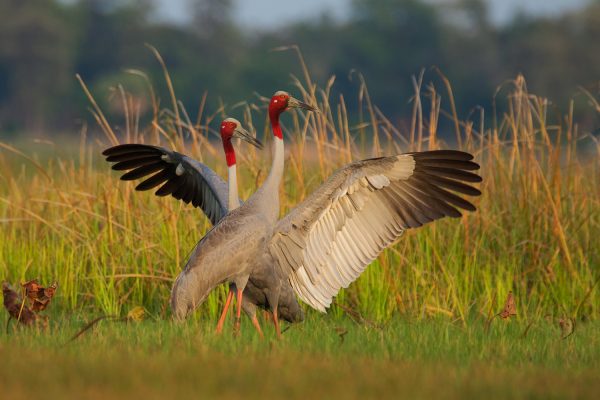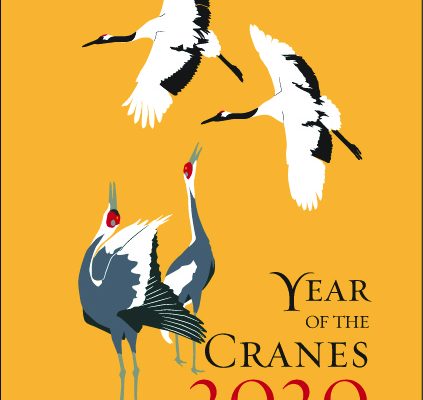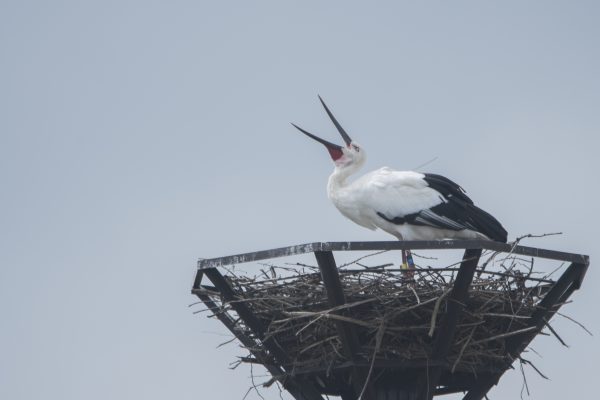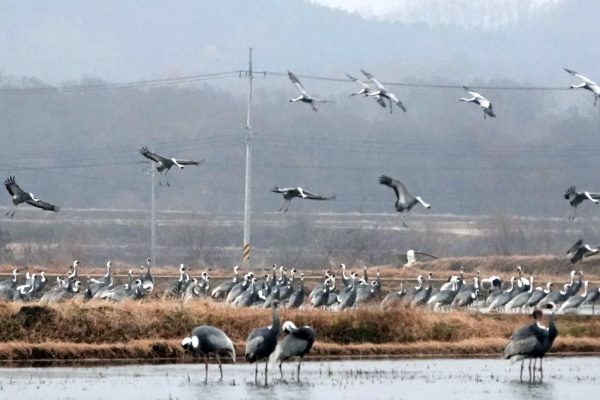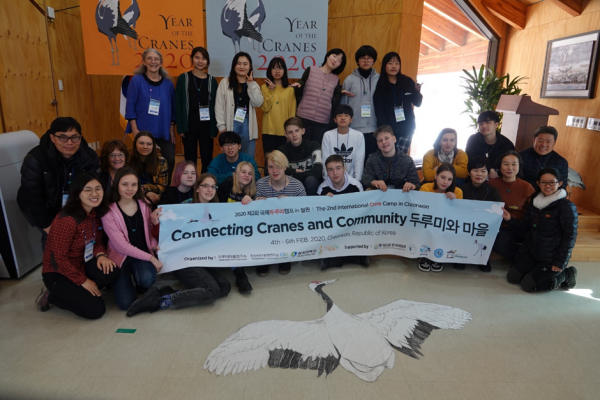-
Updates of HPAI recorded in East Asian – Australasian Flyway
Since November 2021, a series of unprecedent outbreaks of HPAI (Highly Pathogenic Avian Influenza) occurred in western Eurasia and depleted significant percentages of waterbirds and seabird populations: Barnacle Goose in Scotland, Eurasian Crane in Israel, Dalmatian Pelican in southeastern Balkans and seabirds along the coast of the Atlantic Ocean. However, no significant incidents were reported from the East Asian-Australasian Flyway except die-offs of several hundred seabirds, such as Tufted Puffins and Rhinoceros Auklets, recorded around the waters of Kunashir Islands in southern Kuril in August 2022, which no official evidence of an HPAI outbreak was indicated by the time of writing. Yet, outbreaks of HPAI was recorded in cranes and other migratory waterbirds in the EAA Flyway in recent two months. Hooded Cranes in Suncheon Bay © Suncheon City On 1 November 2022, a Hooded Crane was found dead at Izumi, Japan and about one week later it was confirmed to be HPAI positive. Numbers of dead birds escalated since, reaching a daily peak of 74 dead Hooded Cranes collected on 17 November. Dead White-naped Cranes were recorded starting on 14 November. The number of daily totals of dead cranes decreased to less than 15 carcasses found from 8 December. As of 23 December 2022, the total number of carcasses of Hooded Cranes collected at Izumi were at least 1,097 and White-naped Crane at least 47. Three Hooded Crane carcasses testing positive of HPAI were collected from Kyushu: 2 from Isahaya and 1 from Akune (Information from the website of Ministry of the Environment Japan, link). Movements of cranes departing from Izumi, Japan were observed from late November. At the same time, there was a surge in the number of Hooded Cranes wintering at Suncheon, Ro Korea. It was speculated some cranes moved from Izumi to wintering sites in Ro Korea. This was proven by Hooded Cranes tracked by Dr Li Xianda in China (from Izumi, Japan to Chonsu Bay, Ro Korea in late November 2022). However, such movement is not irregular as Dr Li’s tagged Hooded Cranes were also recorded travelling between wintering sites in Japan and Ro Korea in 2020 and 2021 (Per. comm. from Li Xianda to Simba Chan). The number of Hooded Cranes at Suncheon reached a peak of several thousand birds in late November but started to decrease to about 3,500 birds in early December. It is believed cranes moved to Chonsu Bay and Galsa Bay, other wintering sites of Hooded Cranes in Ro Korea. The first dead Hooded Crane was found at Suncheon on 13 November. As of 12 December, 158 dead Hooded Cranes and one dead White-naped Crane were found in Ro Korea. On 20 November one sick Red-crowned Crane was captured in Kushiro, Japan and it was tested HPAI positive one week later. However, this should be seen as an independent case of HPAI from the wintering grounds in western Japan. In response to the HPAI outbreak, the Crane Working Group of the EAAFP held an emergency zoom meeting on 12 December and a proposal for reactions to the HPAI in the EAAF region was submitted to the EAAFP Secretariat. The Crane Working Group also sent warnings to other crane wintering sites. So far no abnormal crane deaths has been reported from China and the wintering sites were advised not to artificially feed cranes to avoid concentrations of cranes and other wintering birds. The Crane Working Group has also contacted crane researchers in Israel on possible links between the present incident and the HPAI outbreak at Hula Valley in December 2021, in which about 8,000 Eurasian Cranes died. Advice from Israeli colleagues was to remove crane carcasses especially those in water as quickly as possible and also avoid artificial feeding that would result in concentration of birds. In late November to early December, 34 dead Oriental Storks were found near Tianjin, at the coast of Bohai, China. Poisoning from poachers and HPAI have been ruled out and the cause of death is still under investigation. On 24 November and 12 December, dead Black-faced Spoonbills were found at Mai Po Nature Reserve and Hong Kong Wetland Park in Hong Kong S.A.R. respectively, were confirmed to be HPAI positive. On 9 December another dead Black-faced Spoonbill collected at Kumamoto Prefecture, Japan was also found to be HPAI positive. It is speculated more birds may have died during migration but were not found or reported. At the time when this news release was written, catastrophic HPAI outbreaks are occurring in Latin America, particularly along the coast of Peru where more than 20,000 dead seabirds (majority Peruvian Pelicans) recorded. The massive outbreaks of HPAI that started in western Eurasia in late 2021 are now being recorded in the East Asian Australasian Flyway. The Crane Working Group contacted other species working groups and task forces and almost all agreed on actions that should be taken as soon as possible. While we proposed strategies to be discussed at meetings in 2023, we also urge managers and local stakeholders at important waterbird/seabird sites to take precautions as suggested below, and countries along the flyway should keep in close communication on new cases of outbreaks. Recommendation to important waterbird/seabird sites: Have at least one staff member in charge of biosecurity. Have a contingency plan following the guidance of national authorities in case of outbreak of avian influenza and other avian diseases. Ideally the plan will be rehearsed every year before migratory seasons so staff and volunteers of the site understand all procedures and their roles in case of emergency. Have a contact list of agencies and institutions that can provide support during an outbreak. Have regular monitoring and surveillance on wild birds, particularly when outbreaks are reported along the flyway. In case sick and/or dead birds are found, try to collect them without causing disturbance to other birds. Although the risk of HPAI transmitting to human is low, personal protective equipment has to be used when handling sick or dead birds and the methods of collection and handling should follow national guidelines. Photographing the dead bird for records and to identify the species and gender. Useful references: 2007. Wild Birds and Avian Influenza: an introduction to applied field research and disease sampling techniques. Edited by D. Whitworth, S.H. Newman, T. Mundkur and P. Harris. FAO Animal Production and Health Manual, No. 5. Rome. (download from here) CMS Scientific Task Force on Avian Influenza and Wild Birds Issues Recommendations (2022) (visit the webpage here). Hacen Mohamed El-Hacen. 2022. Workshop report: Development and consequences of the recent bird flu outbreak among Sandwich terns in the Wadden Sea and adjacent areas (download from here) Scientific Task Force on Avian Influenza and Wild Birds statement on: H5N1 Highly Pathogenic Avian Influenza in poultry and wild birds: Winter of 2021/2022 with focus on mass mortality of wild birds in UK and Israel (2022) (download from here) Wildlife Health Australia (2021) The sixth issue Wild Bird News June 2021 - National Avian Influenza Wild Bird Surveillance Newsletter (download from here) More references and useful links are available on webpage of Avian Influenza Working Group (link), News links: Ministry of the Environment, Japan: 高病原性鳥インフルエンザに関する情報 | 自然環境・生物多様性 | 環境省 (env.go.jp) News about dead seabirds washed to Kunashir Islands in southern Kuril (available on 12 August, 2022, visit the webpage here) Article prepared by Crane Working Group.
Continue reading -
“Crane Rice” – an initiative to improve local livelihoods and conserve the threatened Sarus Crane in Cambodia
‘Sarus Crane Rice’ ©Ministry of Environment of Cambodia & NatureLife Cambodia The Ministry of Environment of Cambodia, in collaboration with NatureLife Cambodia and BirdLife International, has now established a new ‘Crane Rice’ initiative, aimed at improving local livelihoods and better conserving the stately Sarus Crane. ‘Crane Rice’ will involve wildlife-friendly rice farming practices which will benefit the cranes and other waterbirds in Anlung Pring Protected landscape, the first Flyway Network Site in Cambodia (EAAF144) located in Boeung Salang Kang Tbaung and Prek Kruss communes, Kampong Trach district, Kampot Province, Cambodia. Under this initiative, participating farmers need to grow native and crane-preferred rice varieties. They also need to adhere to the guidelines for crane rice. This means that the farmers cannot hunt and snare wildlife on their plots, and apply poisons. Farmers are also expected to avoid encroaching on protected lands and encouraged to adopt organic rice farming (i.e. no application of chemicals fertilizers and herbicides). Half of the rice grown on leased land, will be harvested and packaged for sale while the remainder will be left in the fields to benefit Sarus Cranes and other biodiversity. For crane conservation and protection to be successful, it needs to consider local livelihoods and engagement with stakeholders. The Ministry of Environment will continue to collaborate with our NGO partners to find markets for Crane Rice to ensure the success of the pilot programmes, while encouraging farmers to participate in this initiative and working to ensure that the rice can be sold at a premium. ©Ministry of Environment of Cambodia & NatureLife Cambodia Since its pilot inception which supported by IUCN-Netherland, the project team have collaborated with 16 farmers and over 10 years, leased 17 hectares of rice fields to pilot work to grow crane-friendly rice, thereby benefiting local livelihoods. The number of farmers who have participated in this Crane Rice initiative increased this year, which is very encouraging. Local farmers planting the seeds ©Ministry of Environment of Cambodia & NatureLife Cambodia The permanently based rangers are collaborating with the local authorities and partner NGO to educate local people about the legislation that protects wildlife and the value of rare bird species, especially the Sarus Crane. The Crane Rice Initiative has provided supplementary feeding for the cranes that annually visit our site during their non-breeding season. Mr. Teup Khay, a farmer from Kok Chamkar, was appreciated for joining the Sarus Crane rice pilot project as it provided him with additional income. At the same time, his family are growing rice without the use of chemical fertilizers and pesticides that can help to provide safer food, which they are very proud of. Moreover, If the cranes are better conserved, they will also help to attract more tourists, who would also enjoy the local culture, and hospitality of their communities. About Sarus Crane: Sarus Crane is one of the crane species in EAAFlyway. There is mainly only one species of cranes in Southeast Asia. It is a short-distant migrant between Vietnam and Cambodia, including a re-introduction programme in Thailand. Based on the findings of the 2020 Sarus Crane census in Cambodia, only 194 birds have been recorded, an all-time low. In the last few years, the number of cranes has declined steadily due to the high mortality rate and low nesting success in its breeding grounds. Additional threats faced by the cranes include deteriorating habitat conditions, poisoning caused by pesticide use, lack of food, change in water regimes at key wetlands, diseases, and in the long-term, climate change. Sarus Crane © Ayuwat Jearwattanakanok Article prepared by The Ministry of Environment of Cambodia.
Continue reading -
The First Asian Ornithological Conference convened
The last two decades have seen a tremendous increase in the development of scientific studies and conservation of birds in Asia. The…
Continue reading -
Red-crowned Crane Welcoming Party at Donggeom Island. Ganghwa, Incheon ROK
The closing ceremony of the morning session at the Crane Welcoming Party: People are holding papers written “The representing…
Continue reading -
The “Year of the Cranes” story series #7 – Sarus Crane Nest Adoption in Thailand
Sarus Crane (Antigone antigone) has three disjunct populations in the Indian subcontinent, South-East Asia (occurs in Myanmar, Laos, Vietnam and Cambodia) and northern Australia. Unlike most of other species of cranes…
Continue reading -
A new crane species recorded for Mongolia
Recently, on 13th June, a Mongolian bird photographer, Iderbat Enkhtaivan observed a second calendar year Black-necked Crane in Khutag-Undur, Bulgan province,…
Continue reading -
“Year of the Cranes” story series #5” – Do you know all the crane species in East Asian – Australasian Flyway?
2020 was designated as the Year of the Cranes at the International Workshop of Crane Conservation in East Asia convened in Beijing in October 2019. The campaign aims to…
Continue reading -
Oriental Stork breeding in eastern Japan, after more than a century
On 7 June 2020, two Oriental Stork chicks were confirmed on an artificial nest tower at Watarase-yusuichi, a Ramsar Site at Tochigi Prefecture in eastern Japan. This is the…
Continue reading -
“Year of the Cranes” Story series #3 – What do farmers do in winter in Korea? They help to count cranes!
Every year after harvest of rice in Cheorwon, a place in Ro Korea close to the border of DPR Korea, farmers laid down their farming equipment and picked up…
Continue reading -
“Year of the Cranes” story series #2 – Connecting Cranes and Community: The 2nd International Crane Camp in Cheorwon 2020
* Please scroll down for Russian version In celebrating the Year of the Crane, the enchanting 2nd International Crane Camp took place from 4th to 6th February, 2020 in Cheorwon,…
Continue reading
- 1
- 2

